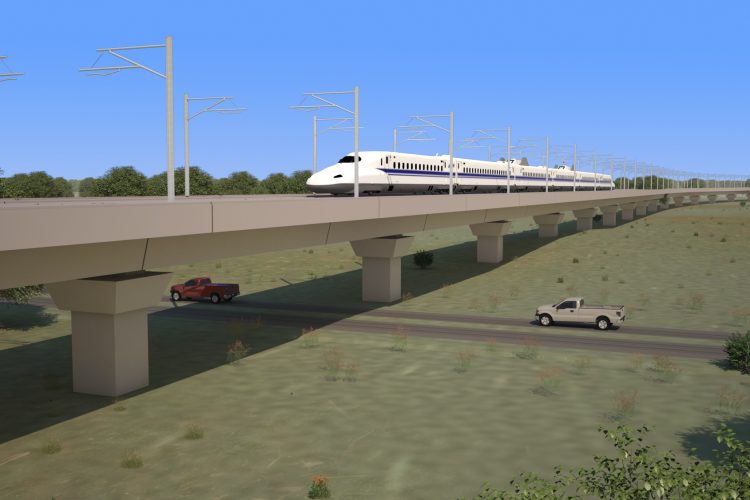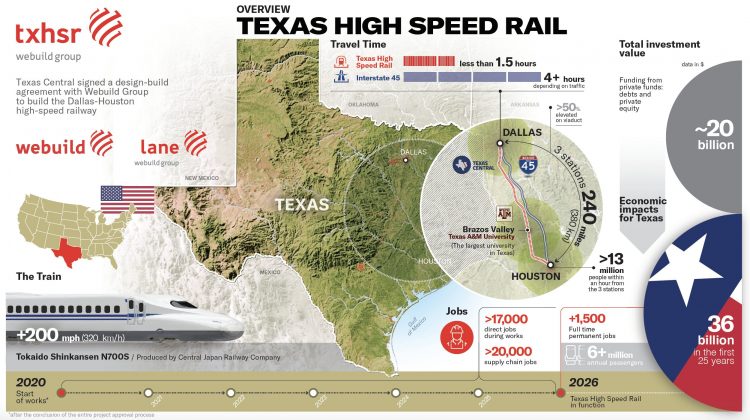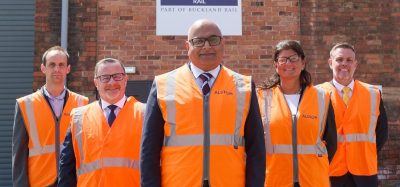Progress made on Dallas to Houston high-speed line development
Posted: 24 September 2020 | Global Railway Review | 1 comment
The Texas high-speed line has received the Rule of Particular Applicability and the Record of Decision, moving it one step closer to the beginning of construction.


Credit: Texas Central
The Webuild Group and its U.S. subsidiary and joint-venture partner, Lane Construction, are now a step closer to starting work on a high-speed railway line between Dallas and Houston after the publication of two federal decisions on the historic project that will bring a major boost to the economy and create thousands of jobs.
Texas Central LLC, which awarded the design-build contract for the early works to Webuild and Lane in September 2019, received the Rule of Particular Applicability (RPA) from the U.S. Department of Transportation’s (USDOT) Federal Railroad Administration (FRA), which sets the safety requirements for the railway’s signal and trainset control, track rolling stock, operating rules and practices, system qualifications and maintenance. It also received the Record of Decision (RoD), completing the environmental review process and confirming the alignment that the railway will follow between Dallas and Houston.
Chief Executive of Webuild, Pietro Salini, said: “This latest achievement, with these two decisions, brings us a step closer to the start of construction on the new railway. Webuild’s unique track record, especially in high-speed rail, will see us apply our expertise to this project that is important for sustainable mobility. As leaders of the design and build work, we are honoured to have been given this unique opportunity to build a high-speed railway in Texas.”


Credit: Webuild Group
The two decisions are a crucial milestone for the start of work on the project, of which the total investment is approximately $20 billion – with an estimated $14 billion dedicated to the civil works – and will prove to be very important for Texas, especially in job creation. It is forecast to bring an estimated $36 billion in economic benefits over the next 25 years, and the immediate impact is estimated to be more than $10 billion in the U.S. Construction, which Texas Central aims to start as soon as possible to help with the economic recovery following the COVID-19 crisis, will lead to the creation of 17,000 direct jobs during the first six years of construction and more than 20,000 indirect jobs.
The civil engineering work on the new high-speed railway between Dallas and Houston includes the design and construction of the viaduct and embankment sections along the entire route, the installation of the track system and the alignment and construction of all the buildings and services that will house maintenance and other rail system equipment.
The railway, which will be 379km long, will transform mobility between the two cities. It will be based on Central Japan Railway’s Tokaido Shinkansen system, the world’s safest mass transportation system. It will carry travellers between Dallas and Houston – with a stop at Brazos Valley, near the Texas A&M University – in 90 minutes, with departures every 30 minutes during peak hours and every hour during off-peak times. It is expected to be 90 minutes faster than car travel and one hour faster than air travel, when considering boarding times.
Related topics
Coronavirus/COVID-19, High-Speed Rail, Infrastructure Developments, Operational Performance, Route Development
Related organisations
Federal Railroad Administration (FRA), Lane Construction, Texas Central, U.S. Department of Transportation (USDOT), Webuild Group









Why not switch to the hyper loop model now? That model will disrupt the rail connection business model – it is cheaper, faster implementation, less space requirements, no need for switching trains, etc. Yes it is developing technology, but it shouldn’t be ignored.